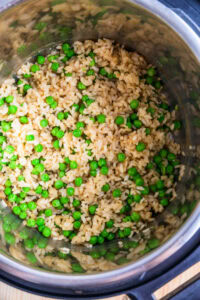A spring recipe with white rice and peas; the simple and quick Takikomigohan banger with few ingredients!
Peas are coming back in style, and not just on the runways! Green, especially in spring, is loved on our plates, and well accompanied, please. Here I offer you a delicious Japanese recipe of white rice cooked with peas.
I agree, technically, we’ve just passed the pea season. What if we extended this sweet period that we didn’t really have?
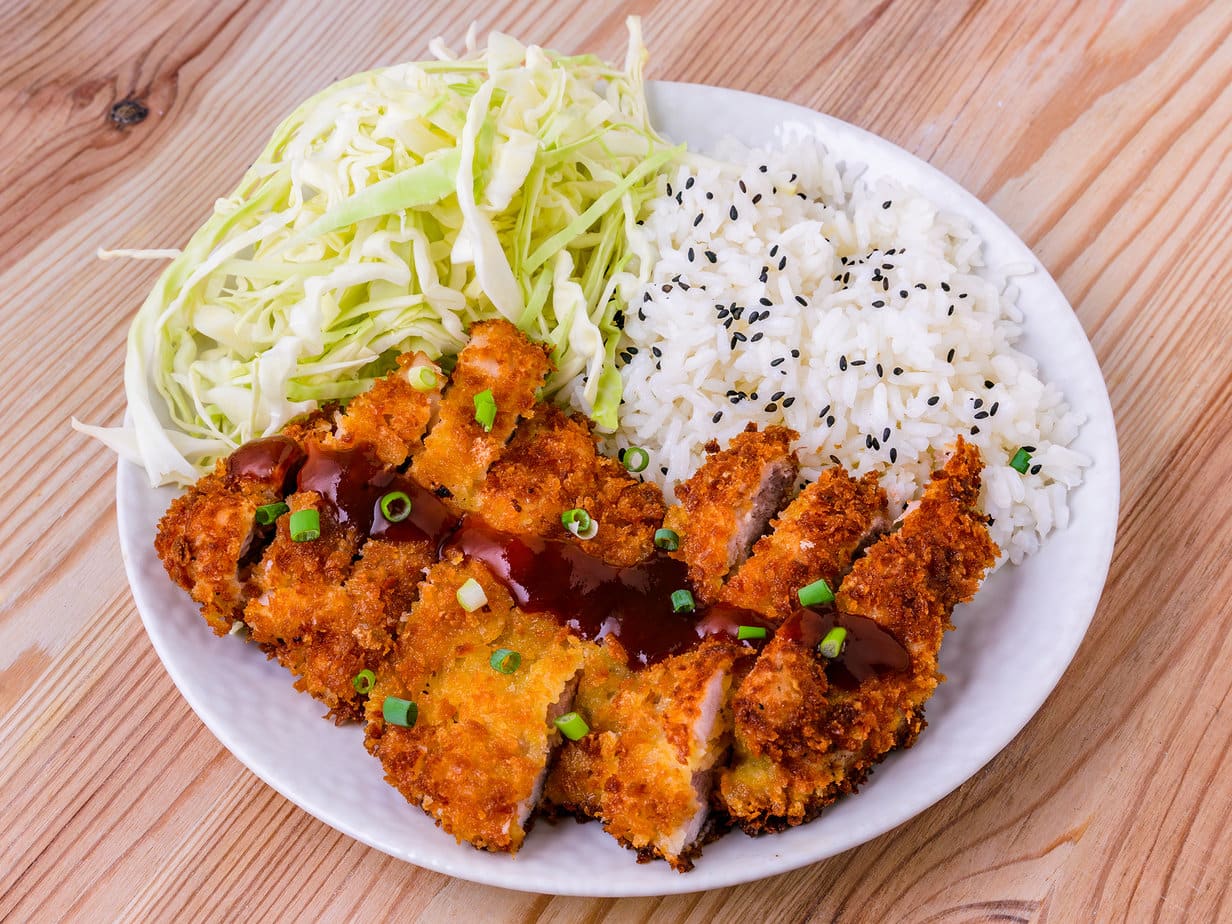
What is Mame Gohan?
Mame Gohan is a relatively simple dish at first glance. It consists only of steamed rice and peas. Simple and effective, indeed. While it’s a simple, even rudimentary composition, Mame Gohan is not devoid of flavors despite its short list of ingredients!
It’s an emblematic dish of Japanese cuisine, especially in early spring, when the first rays of sunshine appear and we can enjoy the pea season.
Generally, when we say “Mame Gohan”, we’re directly referring to the rice and peas recipe. However, it’s worth noting that “Mame” is a Japanese term that refers to any type of bean or legume.
As is the case for “eda mame” beans that can be added to my peanut sauce noodle recipe, for example. As for “Gohan”, this term simply means “rice”.
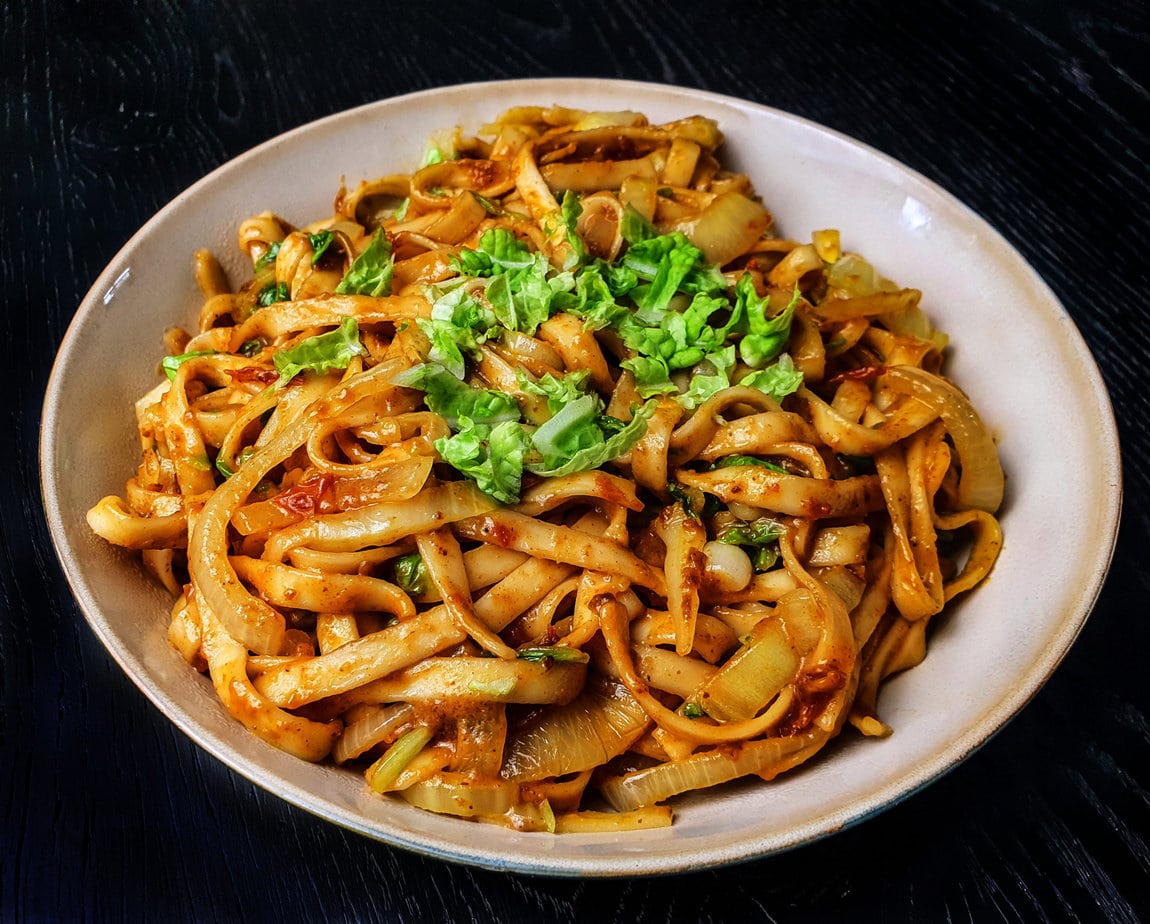
In Japan, there’s actually a specific term to describe this kind of dish. It’s called Takikomigohan. Roughly, it’s a Japanese expression that can be translated as “rice cooked with…”.
So yes, it designates a category of dishes, including Mame Gohan, comprising Japanese rice seasoned with dashi and soy sauce. It can be accompanied by mushrooms (like Shimeji or Enoki), vegetables, meat, fish…
As you’ve understood, Takikomigohan encompasses many different preparations, as long as the ingredients that make up the dish are cooked with the rice. This is what allows it to absorb all the flavors.
There are therefore many variations, such as Tai-Meshi, Ayu-Meshi or Gomoku-Meshi with its shiitake mushrooms, bamboo shoots, burdock roots, bean sprouts, pieces of chicken… As for us, we’ll only be using peas and a few condiments today!
The Main Ingredients of Mame Gohan
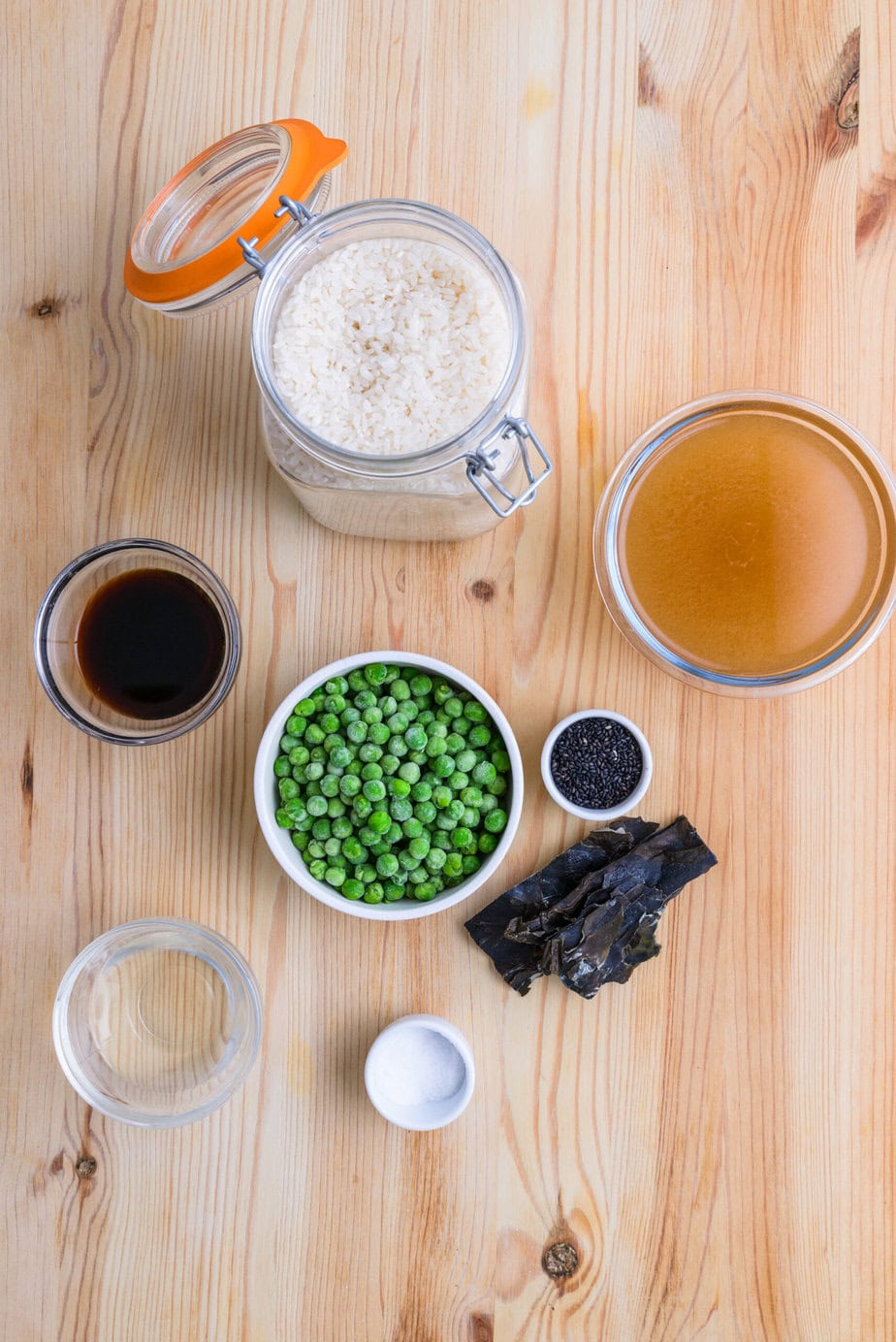
Japonica rice: inevitably, as rice is the staple food in Japan, we’ll use a type of rice called japonica
for this recipe. Its name speaks for itself; it’s a rice found in many Japanese recipes, like Donburi.
It should be familiar to you if you’ve already tried my onigiri or Yakimeshi recipes. I also advise you to take a look at my guide on different types of rice to use it best.
Peas: we don’t often think about them, and yet, when they’re there, they make an impact. Just look at Cantonese rice. Peas are the star vegetable of Mame Gohan. They’re perfectly suited to the season and add a slight crunch to the dish.
Sake: obviously, we won’t leave the white rice with peas as the only fancy element. During cooking, you’ll need to add some condiments to enhance the dish, and sake is one of those elements that will make a difference.
It’s a rice wine often used in cooking, not just as an aperitif! It’s floral, velvety, and sweet. It flavors any dish. You can find it especially in Teriyaki chicken or in Tokashi Butadon, to stay with rice-based recipes!
Kombu: in case you didn’t know, kombu, like nori or aonori, is a type of seaweed widely consumed in Japan.
As it is one of the three main ingredients of dashi, it becomes essential in the preparation of Miso soup, Zaru Soba noodles or ramen. In the Mame Gohan recipe, it’s also an important element. Kombu adds nuance with its umami taste. So don’t skip it.
Light soy sauce: a little touch of salt to balance the neighboring flavors of sake and kombu won’t hurt. Always have light soy sauce in your cupboards, it will be used for almost all your dishes!
Dashi: without kombu, it couldn’t exist. And what a shame that would be! Dashi is one of the pillars of Japanese cuisine. A broth without which many recipes would lose their reason for being. Can you imagine Kitsune Udon without dashi?!
Tips for Successful Mame Gohan
In this recipe, I’ll use frozen peas. However, if you prefer fresh ones, I recommend cooking your peas separately to avoid that “withered” and wrinkled appearance they might have if you put them with the rice in the cooker.
Secondly, I also advise you to keep the water in which you cooked your peas to add it to the rice during cooking. This will allow it to absorb the pea flavor.
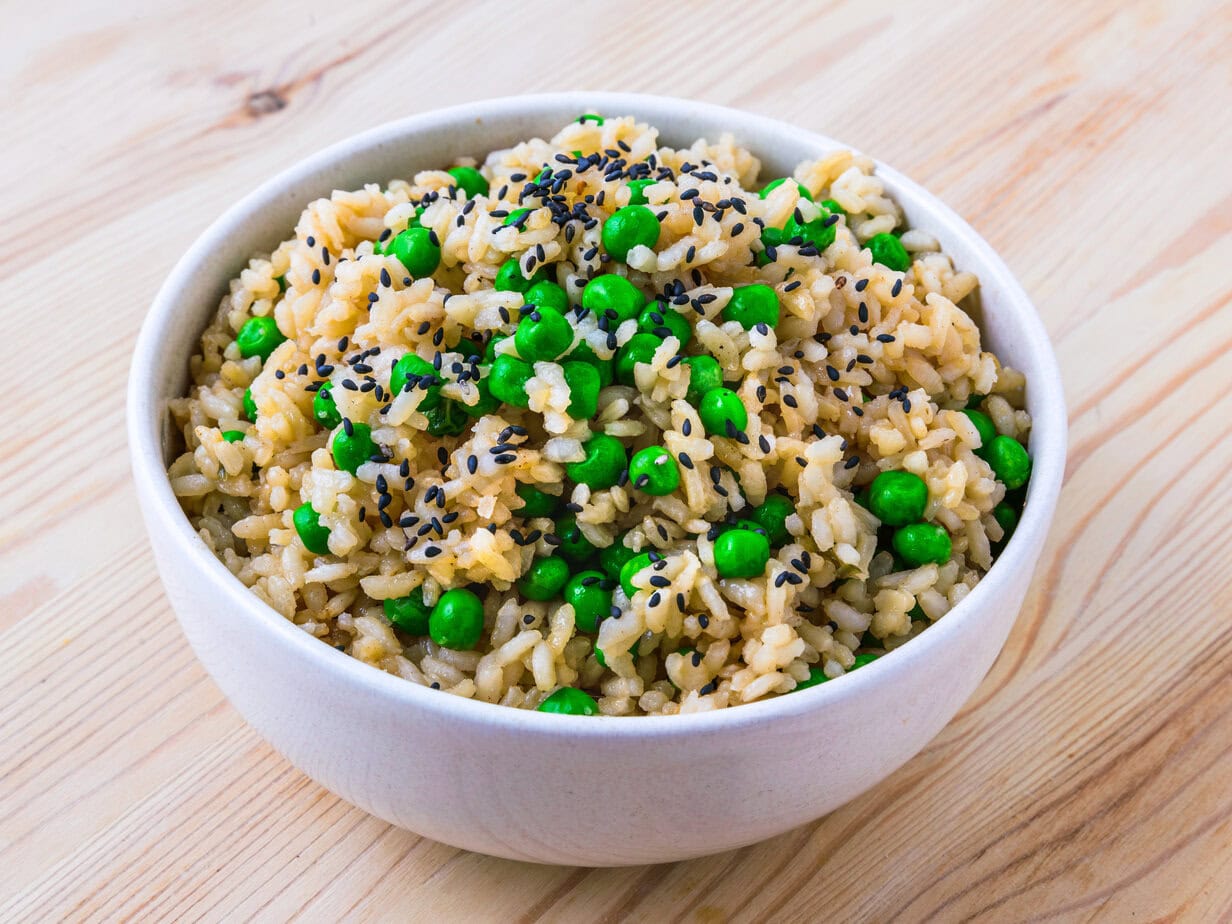
Mame Gohan – Japanese Green Pea Rice
Equipment
Ingredients
- 150 g of frozen peas
Cooking the rice
- 200 g of japonica rice dry weight
- 1 tablespoon of sake
- 0.5 teaspoon salt
- 2 pieces of kombu
- 1 tablespoon light soy sauce
- Powdered dashi mixed with water. The quantity will depend on your rice cooker
Instructions
- Gather all ingredients
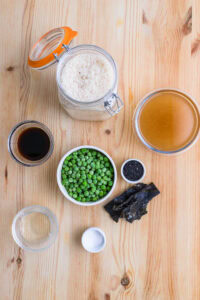
- Rinse the rice 4-5 times until the water runs clear, drain200 g of japonica rice
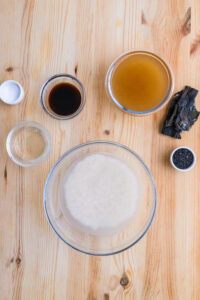
- In the rice cooker pot, add the well-drained rice
- Add sake, soy sauce, and salt, then fill with dashi up to the appropriate level for your rice cooker1 tablespoon of sake, 0.5 teaspoon salt, 1 tablespoon light soy sauce, Powdered dashi
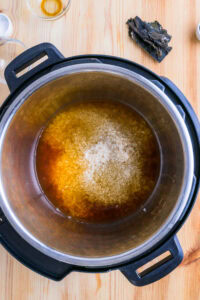
- Place the kombu on top and start cooking the rice2 pieces of kombu
- Once the rice is cooked, remove the kombu
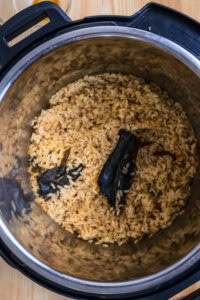
- Add the frozen peas and immediately close the rice cooker lid.150 g of frozen peas
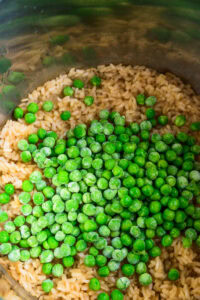
- They will quickly thaw
